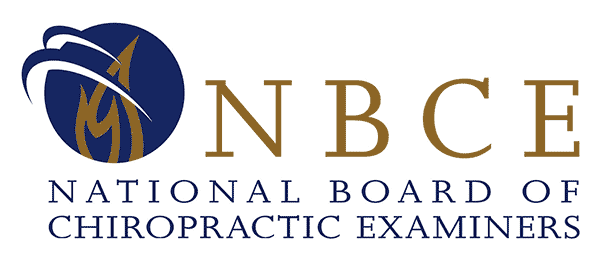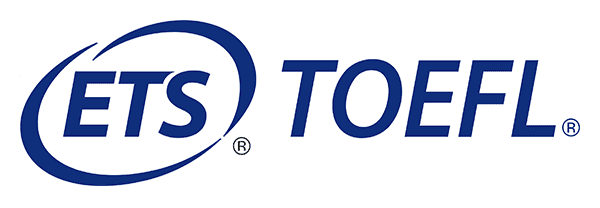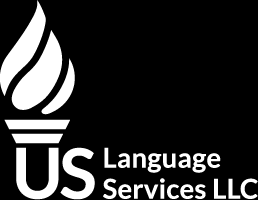How to Work in the U.S. As a Foreign-Educated Chiropractor

Moving your chiropractic business from abroad and opening a new business in the United States or joining an existing U.S.-based practice is a popular topic among foreign-educated chiropractors. U.S. chiropractors are predicted to experience faster-than-average job growth according to the U.S. Bureau of Labor Statistics, and chiropractors in the states receive decent annual pay ranging from $37,400 to $128,750, with average median pay falling at $75,000.
Our guide helps you understand more about becoming a chiropractor in the U.S., and we answer questions about this process such as:
- What Is the Process for Working in the U.S. As a Foreign-Educated Chiropractor?
- How Much Does It Cost to Work as a Foreign-Educated Chiropractor in the U.S.?
- How Long Does It Take To Work as a Foreign-Educated Chiropractor in the U.S.?
- Are There Any Restrictions to Working as a Foreign-Educated Chiropractor in the U.S.?
- What Are the State-Specific Requirements for Foreign-Educated Chiropractors?
- What Are the Immigration Requirements for Foreign-Educated Chiropractors?
- Where Can I Get a Certified Translation?
What Is the Process for Working in the U.S. As a Foreign-Educated Chiropractor?
The process for working in the United States as a foreign-educated chiropractor includes several important steps. You will need to obtain state chiropractic licensing, prove your foreign education meets state education and experience requirements, and apply for a working visa in order to legally immigrate to and work in the United States. The steps for working in the U.S. as a foreign-educated chiropractor include:
- Obtaining your chiropractic education in your home country is the first step of this process, and you should ensure that whichever program you enroll in is the equivalent of a chiropractic degree in the United States. This is a four-year Doctor of Chiropractic degree in the U.S., so you will need to ensure that the academic course you complete has a similar length of study. You will need to obtain a credential evaluation for your foreign credentials to ensure they meet the U.S. chiropractic study equivalency.

 Find a reputable credential service to work with by visiting either the National Association of Credential Evaluation Services (NACES) or the Association of International Credential Evaluators (AICE). These organizations are comprised of credential evaluators that adhere to accurate evaluations and high standards.
Find a reputable credential service to work with by visiting either the National Association of Credential Evaluation Services (NACES) or the Association of International Credential Evaluators (AICE). These organizations are comprised of credential evaluators that adhere to accurate evaluations and high standards. - Once you’re sure you meet the minimum academic requirements to be a chiropractor in the United States, you will need to earn passing scores on each section of the National Board of Chiropractic Examiners (NBCE) exam. This exam consists of five different sections that test different parts of the knowledge you gain during your chiropractic academic program. Typically, the exam is taken throughout your course of study in the U.S., but if you’ve earned your chiropractic education in a foreign country, you will need to be sure that you set aside time for this exam. Information about each section of the exam plus application information can be found on the NBCE website. State requirements do vary, so make sure you understand which portions of the exam are considered the most important and what your score needs to be to pass each section of the exam by reviewing specific state requirements.

- If you’re immigrating to the U.S. from a country where English isn’t the predominant language, you may want to take the Test of English as a Foreign Language (TOEFL) or the International English Language Testing System (IELTS). A passing score on either of these tests may help give you an advantage when it comes to taking required chiropractic exams, applying for state licensing, and working on immigration applications, such as your visa documents.


- After you’ve passed your NBCE exam, you will need to look into specific state chiropractic licensing requirements. Most states will have an ethics or state-specific exam that you need to take in addition to licensing fees and applications. You will most likely need to submit your original academic documents from your foreign chiropractic education to the state chiropractic licensing board along with a certified translation of these documents and a credential evaluation that shows you meet the minimum education and experience requirements of that specific state. Use the NBCE’s directory of state chiropractic licensing boards to gather information on what each state requires before chiropractic licensing is awarded.
- Once you’ve ensured that you meet state licensing requirements and have obtained your license, you will need to decide if you want to work with an existing chiropractic office in the state you wish to live and work in, or if you want to start your own chiropractic practice. The option you decide to go with determines the visa type that will be the best fit for you and your career goals.
Most chiropractors have the option of applying for an H-1B visa for specialty occupations or the E-1 Treaty Trader or E-2 Treaty Investor visas. It’s important to read the eligibility requirements for these visas and how they may apply to your situation so you have the best chance of quickly receiving a visa and immigrating to the U.S.
When you’ve completed all the required exams, received your state chiropractic license, and obtained the correct U.S. visa, you will be able to immigrate to the United States and continue your career as a chiropractor. Make sure you pay attention to specific state requirements such as continuing education credits or license renewal fees so that your time working in the U.S. continues without major issues.
How Much Does It Cost to Work as a Foreign-Educated Chiropractor in the U.S.?
The overall cost of working as a foreign-educated chiropractor in the U.S. takes into account items such as the required National Board of Chiropractic Examiners (NBCE) exam, state exams, visa applications, background checks and other application fees, state licensing fees, and the cost of credential evaluations and certified translations. In total, you may pay between $5,000 and $6,000 or more to obtain everything needed for a chiropractic license in the U.S. Fees for the NBCE exam vary based on which parts of the exam your state licensing board requires, and fees for state licensing also vary. You will need to check with your state’s chiropractic licensing board directly and consult specific visa application fees to get a more detailed breakdown of the overall cost of working as a foreign-educated chiropractor in the U.S.
How Long Does It Take To Work as a Foreign-Educated Chiropractor in the U.S.?
Working as a foreign-educated chiropractor in the U.S. is not the swiftest process due to the exams you need to take and the processing time for your visa application. Not including the length of time it takes to obtain your education, the entire process may take between 2 and 4 years, depending on your specific situation.
Studying for the NBCE exam will take several months at a minimum, and scheduling and taking each part of this exam may extend this process to a year or more. Visa applications generally take between 3 and 24 months to process, depending on the type of visa you are applying for, and state licensing, including state-specific exams, may also take several months to receive.
Are There Any Restrictions to Working as a Foreign-Educated Chiropractor in the U.S.?
Once you have obtained all proper state licensing, secured your own practice or joined an existing chiropractic office, and received your visa or green card to enter the United States and work, you will be able to practice as a chiropractor without any restrictions.
Keep in mind that you may need to keep up with state licensing requirements that include ongoing education requirements and license renewal to ensure you can practice without interruption.
What Are the State-Specific Requirements for Foreign-Educated Chiropractors?
Chiropractic licensing is handled on a state-by-state basis in the U.S., which means that foreign-educated individuals will need to consult with a state’s specific chiropractic licensing board for full requirements and instructions on practicing in that jurisdiction.
Most state requirements will include meeting testing requirements with exams administered by the National Board of Chiropractic Examiners, specific state ethics tests, submitting license applications and applicable fees, and providing proof of chiropractic education with evidence that the U.S. education and work equivalent required by that state has been obtained.
You may also be required to meet continuing education requirements depending on the state you are applying to work in; these may include ongoing exams, educational courses, and license renewal applications or fees.
What Are the Immigration Requirements for Foreign-Educated Chiropractors?
Foreign-educated individuals that wish to work in the U.S. as chiropractors will need to obtain the proper immigration documents to be legally allowed into the country to both live and work. There are a few different visa options that foreign-educated chiropractors may be able to take advantage of depending on their specific circumstances.
In most cases, chiropractors will need to apply for an H-1B visa for specialty occupations. However, the E-1 Treaty Trader or E-2 Treaty Investor visas may also be an option for those that plan on operating their own self-employed practice once in the United States. It’s important to consult with a U.S. immigration lawyer if you have any questions about which type of visa to apply for or if you need assistance with the visa and immigration process.
Where Can I Get a Certified Translation?
Certified translations of your important documents such as academic transcripts, diplomas and certifications, licenses, resumes, and birth certificates may all be required as you obtain credential evaluations and apply for U.S.-based employment. You will also likely need to provide certified translations of these documents or other documents as you apply for a U.S. visa or green card.
You can easily obtain certified translations of all of these documents through our online store.
Guaranteed Acceptance
All our certified to English translations are accepted by the USCIS. Our translations follow the guidelines established by the USCIS and are also accepted by educational institutions.
Most Requested Documents
FAQs
You can order most translations 24 hours a day, 7 days a week through our online store. For large projects (more than 20,000 words or 50 pages), please request a quote.



